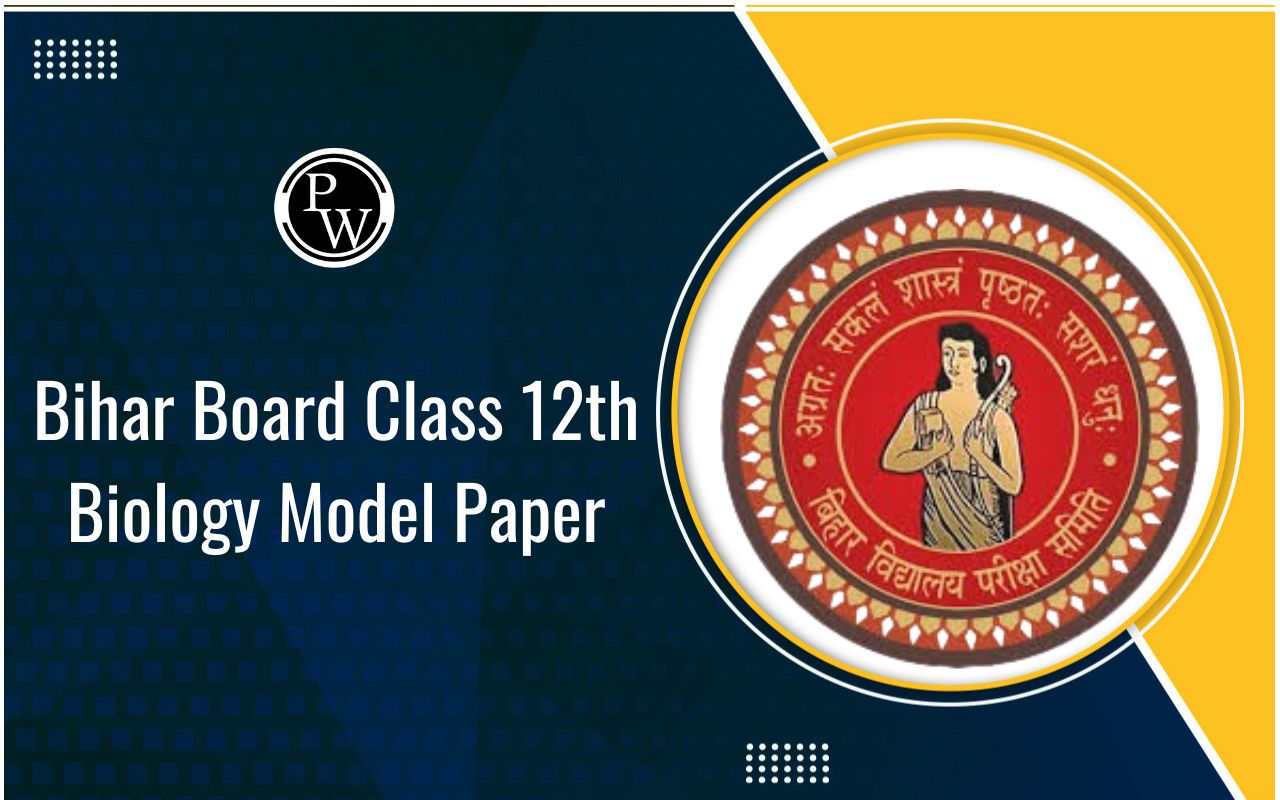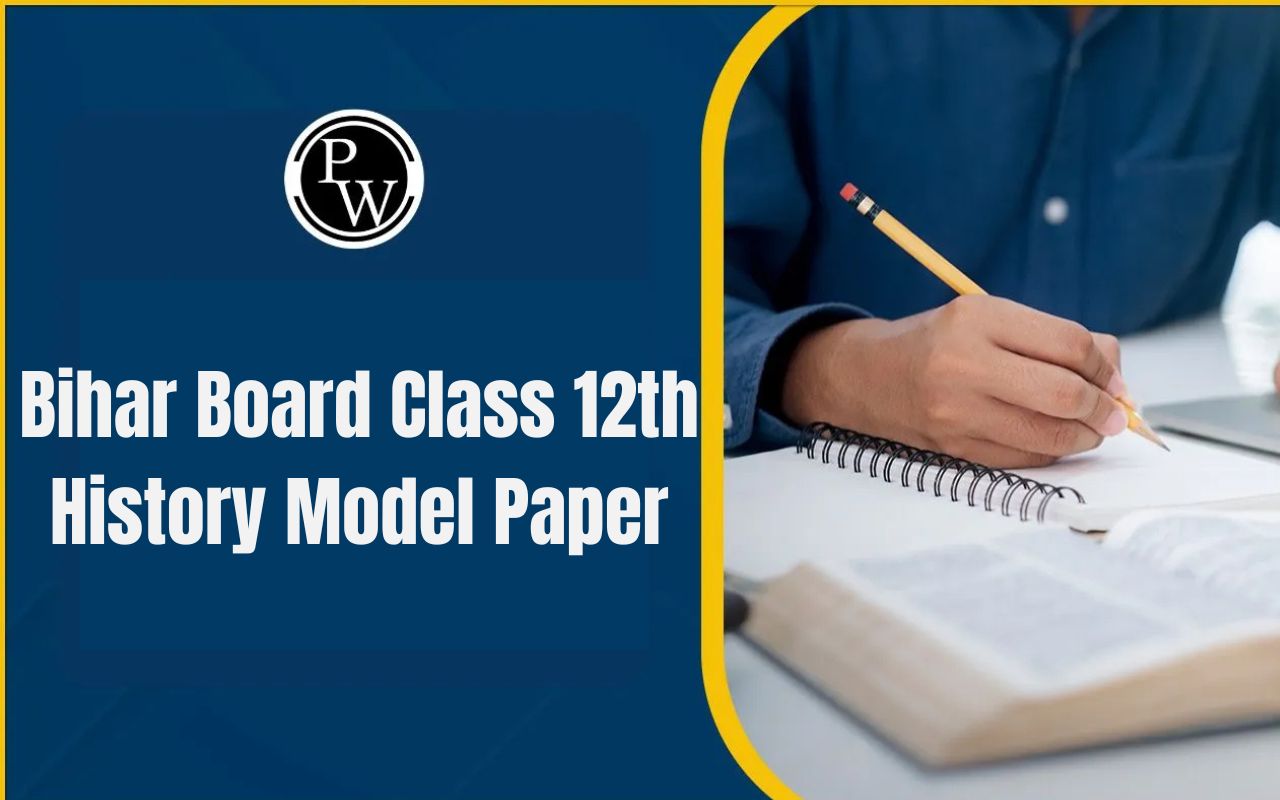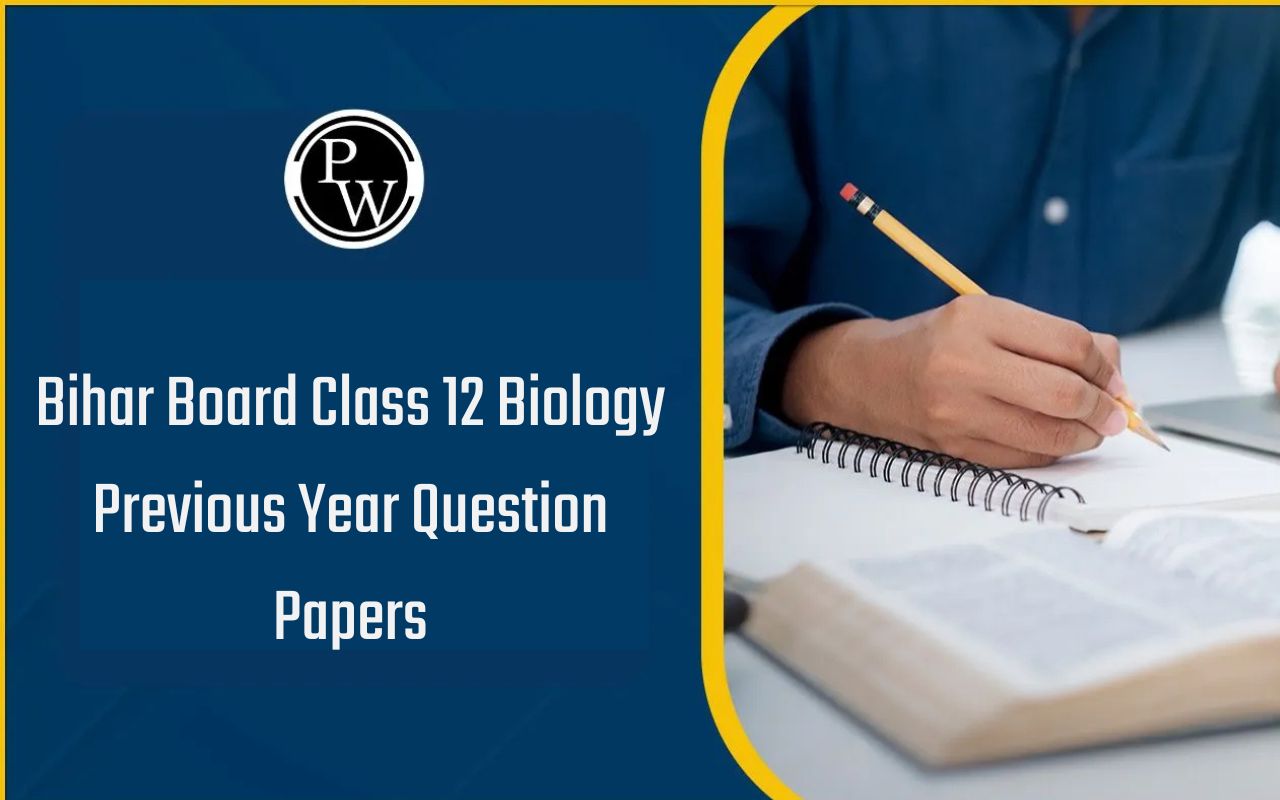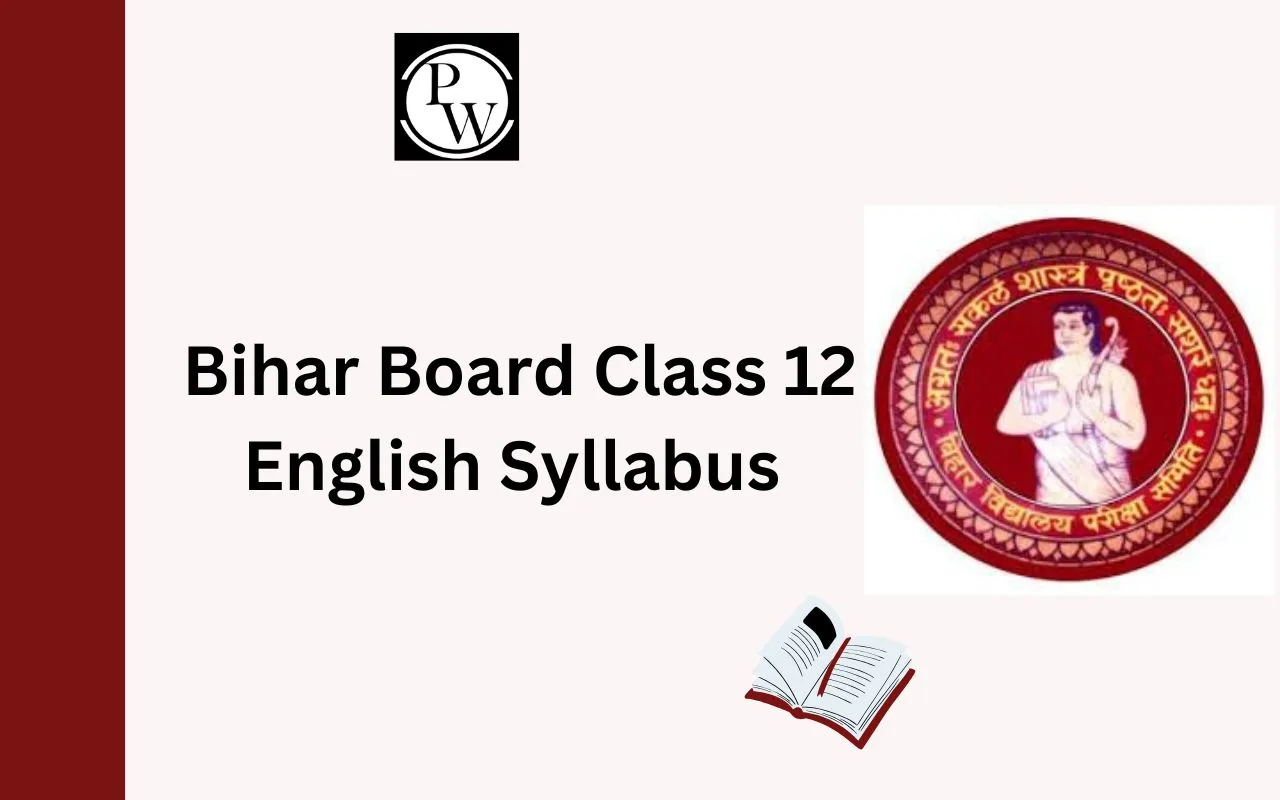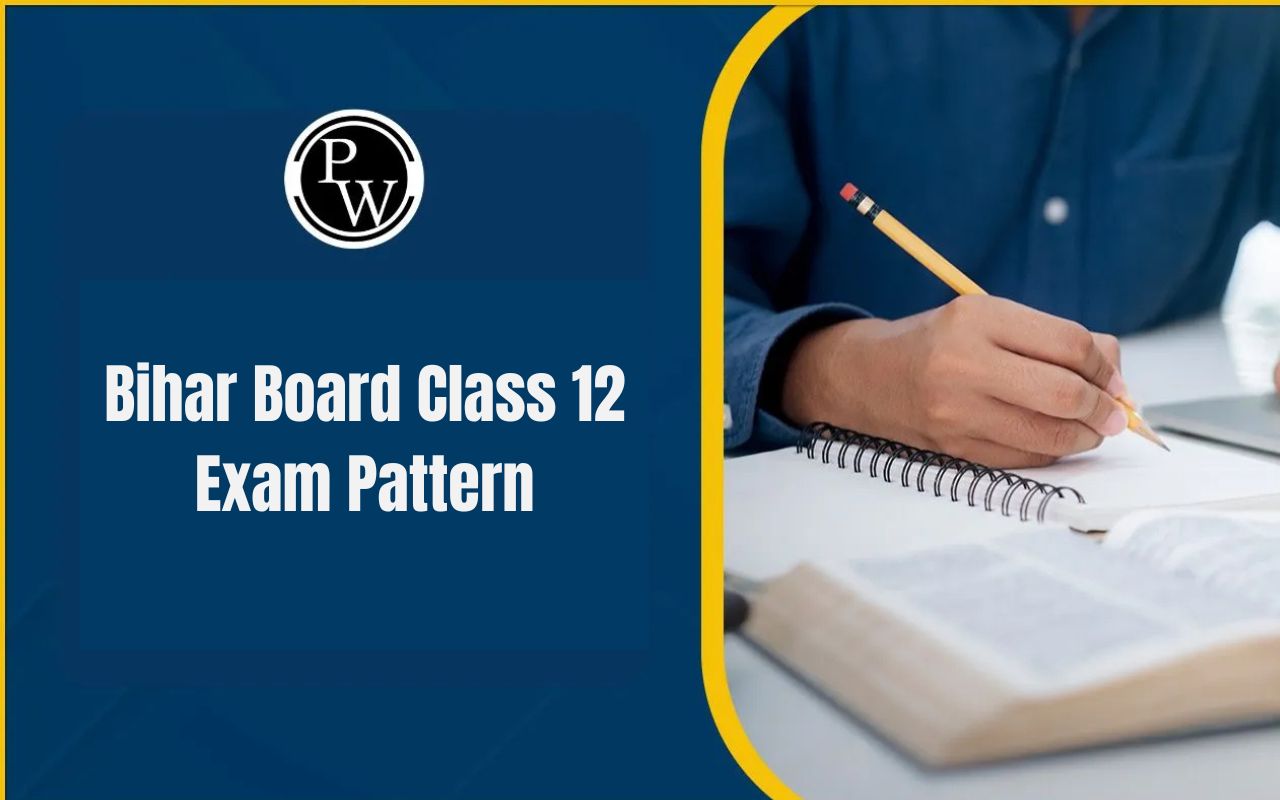
Bihar Board Class 12 Science Syllabus 2024-25 is available on the official website for download at biharboardonline.bihar.gov.in. Class 12 Bihar Board Science Syllabus includes four subjects i.e., Mathematics, Physics, Chemistry, and Biology. The Bihar Board Class 12 board exam will include 100 questions from each subject and the question paper will include 50% multiple choice-based questions and 50% subjective questions. The subject which includes a practical exam, the theory exam for that subject is conducted for 70 marks. The remaining marks are allotted for the practical exam. Students can check the subject-wise chapters included in Bihar Board Class 12 Science Syllabus 2024-25 here.
Bihar Board Class 12 Science Syllabus PDF Download
Candidates appearing for Bihar Board Class 12 exam can download the subject-wise Bihar Board Class 12 Science Syllabus PDF in the table below. The class 12 Science question paper includes objective-type questions, short-answer type questions, long-answer type questions, and very-long answer type questions.| Bihar Board Class 12 Science Syllabus PDF Download | |
| Subject | Syllabus PDF |
| Mathematics | Download PDF |
| Physics | Download PDF |
| Chemistry | Download PDF |
| Biology | Download PDF |
Bihar Board Class 12 Science Syllabus 2024-25
The class 12 Science syllabus includes subjects such as Mathematics, Physics, Chemistry, and Biology. Students can check the subject-wise topics included in Bihar Board Class 12 Science Syllabus 2024-25 below.Class 12 Bihar Board Science Syllabus for Mathematics
Candidates can check the topics included in Class 12 Bihar Board Science Syllabus for Mathematics in the table below. The important topics are Relations and Functions, Calculus, Probability, etc.|
Class 12 Bihar Board Science Syllabus for Mathematics |
|
| Unit | Topics |
| Unit 1: Relations and Functions |
|
| Unit 2: Algebra |
|
| Unit 3: Calculus |
|
| Unit 4: Vectors and 3-D Geometry |
|
| Unit 5: Linear Programming |
|
| Unit 6: Probability |
|
Class 12 Bihar Board Science Syllabus for Physics
Students can check the topics included in Class 12 Bihar Board Science Syllabus for Physics in the table below. The important topics are Electrostatics, Current Electricity, Electromagnetic Induction and Alternating Currents, Optics, etc.|
Class 12 Bihar Board Science Syllabus for Physics |
|
| Units | Important Topics |
| Electrostatics | Electric Charges, Conservation of charge, Coulomb’s law-force between two point charges, forces between multiple charges, the electrical potential energy of a system of two point charges and of electric dipole in an electrostatic field, etc. |
| Current Electricity | Ohm’s law, electrical resistance, V-I characteristics (linear and nonlinear), electrical energy and power, electrical resistivity and conductivity, Kirchhoff’s laws and simple applications. Wheatstone bridge, metre bridge, etc. |
| Magnetic effect of Current and Magnetism | Torque on a magnetic dipole (bar magnet) in a uniform magnetic field; bar magnet as an equivalent solenoid, Force on a moving charge in a uniform magnetic and electric fields, Earth’s magnetic field and magnetic elements, etc. |
| Electromagnetic Induction and Alternating Currents | Electromagnetic induction; Faraday’s law, induced emf and current; Lenz’s Law, peak and RMS value of alternating current/voltage; reactance and impedance, etc. |
| Electromagnetic Waves | Electromagnetic waves, their characteristics, their transverse nature, Electromagnetic spectrum, including elementary facts about their uses, etc. |
| Optics | Refraction of light, total internal reflection and its applications, lensmaker’s formula. Magnification, power of a lens, Reflection of light, spherical mirrors, mirror formula, a combination of thin lenses in contact, etc. |
| Dual Nature of Matter | Matter waves-wave nature of particles, de Broglie relation, Photoelectric effect, Hertz and Lenard’s observations; Einstein’s photoelectric equation-particle nature of light, Davisson-Germer experiment, etc. |
| Atoms and Nuclei | Bohr model, energy levels, hydrogen spectrum, Composition and size of nucleus, Alpha-particle scattering experiment; Rutherford’s model of atom; atomic masses, isotopes, radioactive decay law, etc. NCERT Solutions on Atoms |
| Electronic Devices | transistor as a switch, I-V characteristics of the transistor, transistor as an amplifier (common emitter configuration), the basic idea of analogue and digital signals, etc. |
| Communication Systems | Propagation of electromagnetic waves in the atmosphere, amplitude modulation. Production and detection of an amplitude-modulated wave, etc. |
Class 12 Bihar Board Science Syllabus for Chemistry
Candidates can check the topics included in Class 12 Bihar Board Science Syllabus for Chemistry in the table below. The important topics are Solid State, Electrochemistry, p-block Elements, Aldehydes, Ketones, and Carboxylic Acids, etc.|
Class 12 Bihar Board Science Syllabus for Chemistry |
|
| Units | Important Topics |
| Unit 1: Solid State | Electrical and magnetic properties, Packing efficiency, voids, number of atoms per unit cell in a cubic unit cell, point defects, etc. |
| Unit 2: Solutions | Osmotic pressure, determination of molecular masses using colligative properties, Elevation of boiling point, depression of freezing point, abnormal molecular mass, etc. |
| Unit 3: Electrochemistry | Kohlrausch’s Law, lead accumulator, Conductance in electrolytic solutions, specific, variations of conductivity with concentration, etc. |
| Unit 4: Chemical Kinetics | Integrated rate equations and half-life, the concept of collision theory (elementary idea, no mathematical treatment), etc |
| Unit 5: Surface Chemistry | Brownian movement, electrophoresis, Lyophobic multimolecular and macromolecular colloids; properties of colloids; Tyndall effect, coagulation, emulsion-types of emulsions, etc |
| Unit 6: General Principles and Processes of Isolation of Elements | Occurrence and principles of extraction of aluminium, copper, zinc and iron, Principles and methods of extraction – concentration, oxidation, reduction – electrolytic method and refining; etc |
| Unit 7: p-block Elements | Halides PCl3, Ozone, Sulphur-allotropic forms; Phosphorus – allotropic forms, Preparation properties and uses of sulphur-dioxide, etc. |
| Unit 8: d and f-block elements | Magnetic properties, interstitial compounds, Metallic character, ionization enthalpy, preparation and properties of K2Cr2O7 and KMnO4, etc |
| Unit 9: Coordination Compounds | IUPAC nomenclature of mononuclear coordination compounds. Bonding, Introduction, ligands, coordination number, Werner’s theory, VBT, and CFT; structure and stereoisomerism, etc |
| Unit 10: Haloalkanes and Haloarenes | Nomenclature, nature of C-X bond, physical and chemical properties, substitution reactions, etc |
| Unit 11: Alcohols, Phenols, and Ethers | Mechanism of dehydration, physical and chemical properties, uses, uses with special reference to methanol and ethanol, etc |
| Unit 12: Aldehydes, Ketones, and Carboxylic Acids | Nomenclature, nature of carbonyl group, methods of preparation, physical, uses, methods of preparation, etc |
| Unit 13: Amines (Organic Compounds and containing Nitrogen) | Classification, structure, methods of preparation, secondary and tertiary amines, etc |
| Unit 14: Biomolecules | Monosaccharides (glucose and fructose), polysaccharides (starch, cellulose, glycogen) importance, etc |
| Unit 15: Polymers | Biodegradable and non-biodegradable polymers, etc, Some important polymers: natural and bakelite, rubber, etc |
| Unit 16: Chemistry in Everyday Life | Tranquillizers antiseptics, disinfectants, antacids, antihistamines, artificial sweetening agents, etc |
Class 12 Bihar Board Science Syllabus for Biology
Candidates can check the topics included in Class 12 Bihar Board Science Syllabus for Mathematics in the table below. The important topics are Sexual Reproduction, Genetics and Evolution, Biotechnology and its Applications, etc.|
Class 12 Bihar Board Science Syllabus for Biology |
|
| Unit | Important Topics |
| Unit 1: Sexual Reproduction | Pollination and fertilization in flowering plants Development of seed and fruit Human Reproduction, pregnancy and parturition |
| Unit 2: Genetics and Evolution | Chromosome theory of inheritance, Deviations from Mendelism ratio, Sex determination in human beings: XX, XY, Linkage and crossing over, etc |
| Unit 3: Biology & human welfare | Microbes in household food processing, industrial production, sewage treatment and energy generation, Cancer and AIDS |
| Unit 4: Biotechnology and its Applications | Recombinant DNA technology Applications in Health, Biosafety issues |
| Unit 5: Ecology and Environment | Organisms and Populations Ecosystem, and Environmental Issues |
Bihar Board Class 12th Science Subjects Preparation Tips
Bihar Board Class 12th Science Syllabus 2024-25 is vast syllabus. Students must follow a proper planned study schedule to secure good marks in the exam.Bihar Board Class 12 Science Syllabus 2024-25 FAQs
What subjects are included in the Bihar Board Class 12 Science syllabus?
Is there a practical component in the Science subjects?
How can students download the Bihar Board Class 12 Science syllabus?
How many units are there in the Biology syllabus?


